Welcome! In this lesson we’re going to learn a creative string skipping and tapping sequence that changes key on the same root note, meaning that we’ll change between G Major & G Minor. We’ll also be using some extended arpeggios that use 7th and 9th extensions.
We’re going to take two basic string skipping tapped arpeggios and make a sequence out of them to make it more interesting. This tapping sequence uses T2 and T3 tapping, that’s two fingers on your picking hand. Usually I would suggest your middle and ring finger so you can still hold the pick. For a really creative sound that throws your listener off we’re going to change key using the same root note. Let take a look at these basic shapes first and then we can check out the sequence.
String Skipping Tapped Arpeggios
The first shape is going to be based around a major 7 string skipping tapped arpeggio. This shape looks like this:
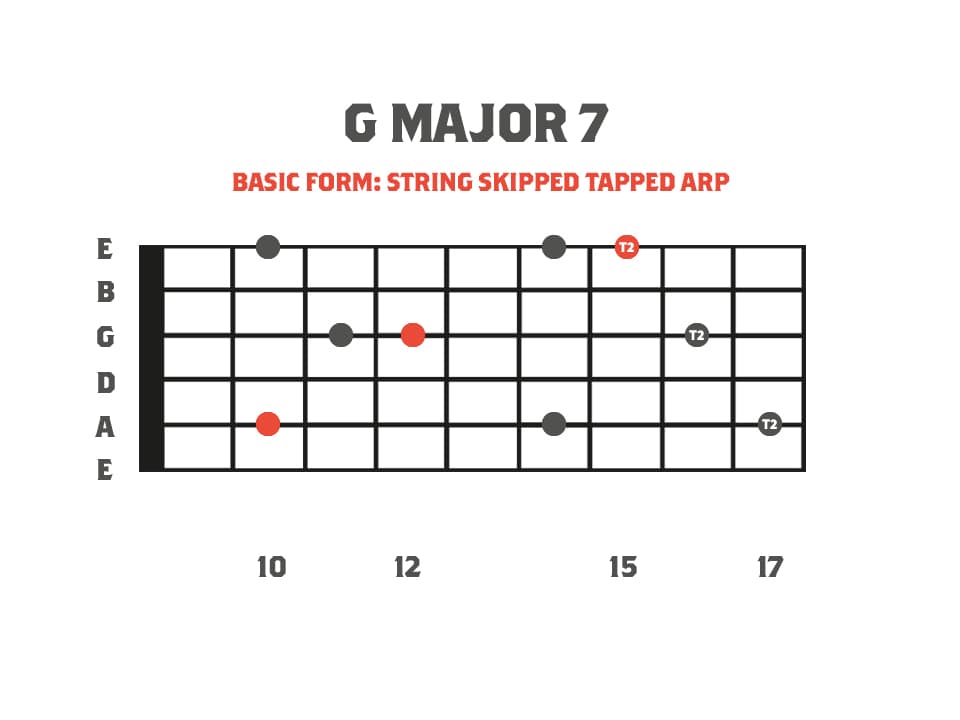
The next shape is going to be based around the basic form of the minor 7 string skipping tapped arpeggio. It looks like this:
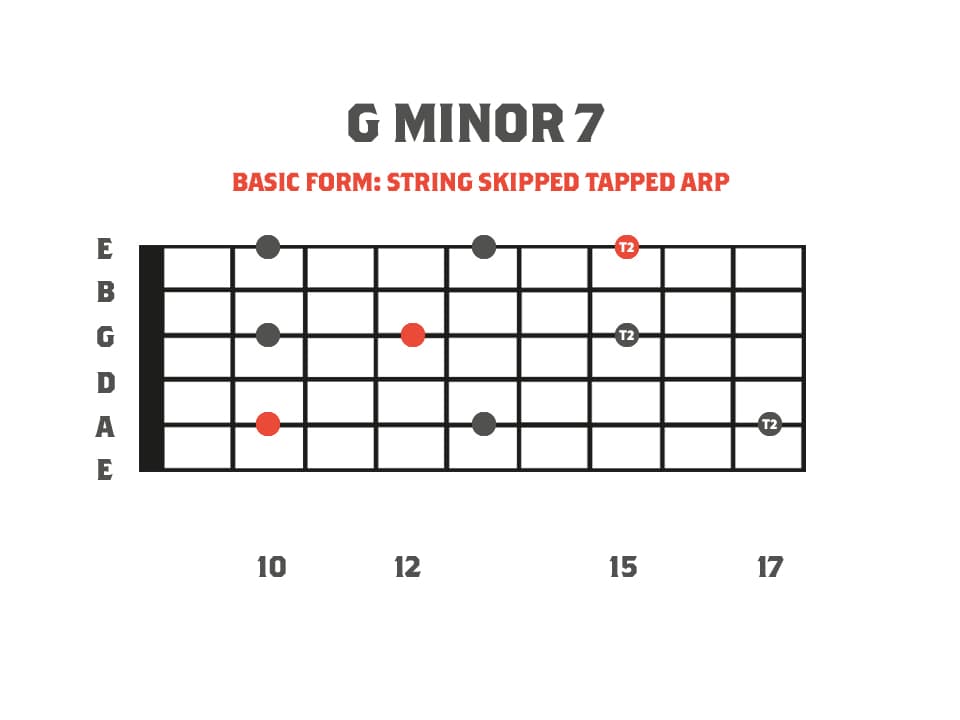
Some Helpful Theory: Tapped Arpeggio Extensions 7th & 9th
As a part of our string skipping & tapping sequence we’re going to be tapping some additional notes from the scale that make up these extended arpeggios. We’ll be tapping the 7th and 9th extensions so we’ve now got a major 9th arpeggio and a minor 9th arpeggio on the second part of the sequence.
9th arpeggios are simply the scale degrees: root > third > fifth > seventh > ninth. Don’t confuse major or minor 9th with Add 9th arpeggios. Add 9th, as the name suggests simply adds the 9th scale degree to a regular triad arpeggio, no 7th scale degree. So an add 9 would simply be root > third > fifth > ninth.
Tapping Arpeggio Sequence
Now the fun begins. Here’s how we’re going to turn this into a sequence. The most easy way to approach this type of key changing idea would simply be to blaze up and down each arpeggio and changes key on the spot. While this sounds cool we can add an extra dimension to our playing by using these arpeggios to make a string skipping tapped arpeggio sequence.
We’ve demonstrated the shapes that we’ll be using for the sequence but please download the tab for a few different ideas on how to play the sequence properly. Additionally we would encourage you to incorporate these shapes into your own playing and adapt them to your own wicked ends!

On the second part of the sequence we’ll be tapping some different notes on the high E string. This is where the T2 and T3 tap comes in. This then changes our arpeggios from major 7 to major 9 by adding in the additional note from the scale.
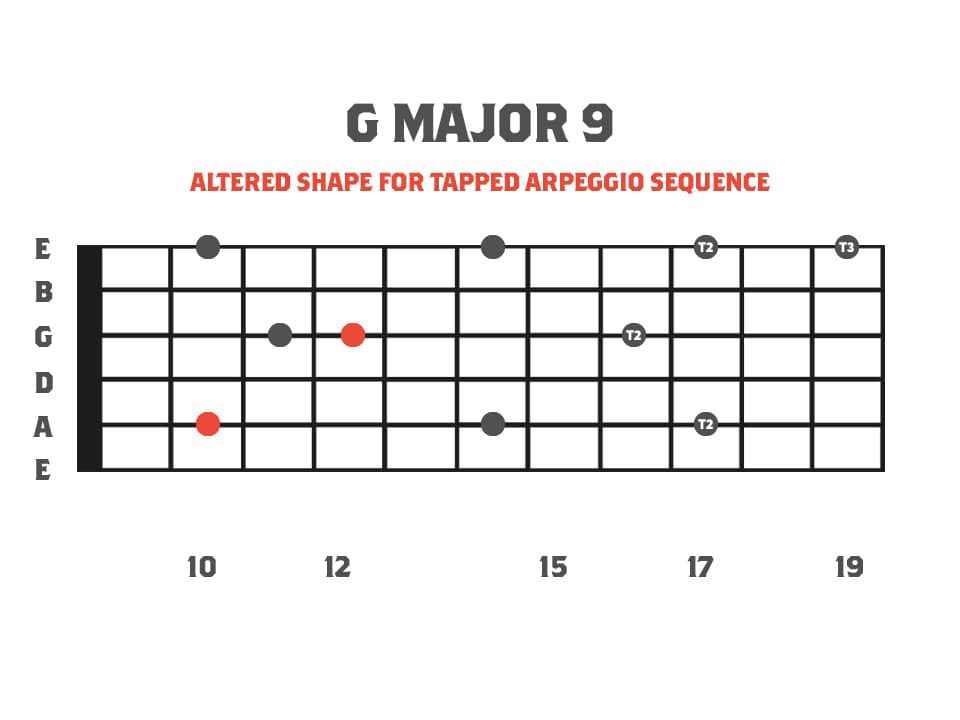
We can then change key from the same root note, in this case G. Now we shift to our Gminor 7 and Gminor 9 tapped arpeggios.

Our T2 T3 tapping sequence is the same for the minor 9 variant, however the note placement changes so make sure you watch out for that.
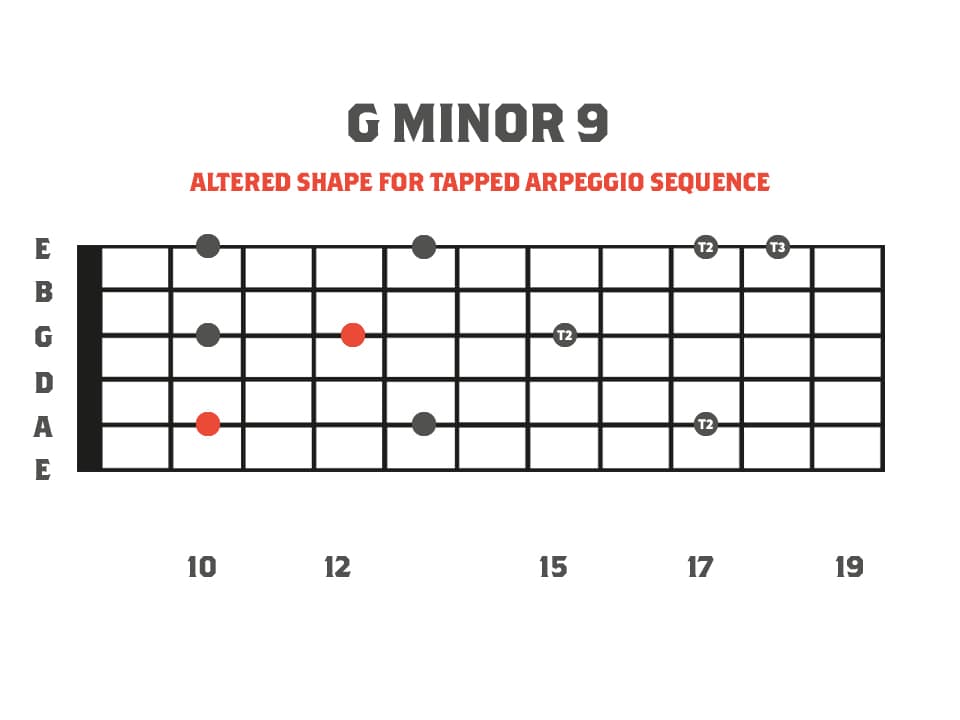
Additional Ideas – Other Arpeggio Tonalities
There’s no limit to the types of additional tonalities you could explore this idea with. If you keep your arpeggios based off of the same root you could explore many other types of extended arpeggio possibilities. Remember to experiment and mix it up for a really creative outside sound that will take your listener on a journey.
This is also a great way to hear the difference between chord / arpeggio quality and what effect is has on the feel of the song or passage. i.e sad / happy / suspense / fear etc. Here’s a couple more for reference:
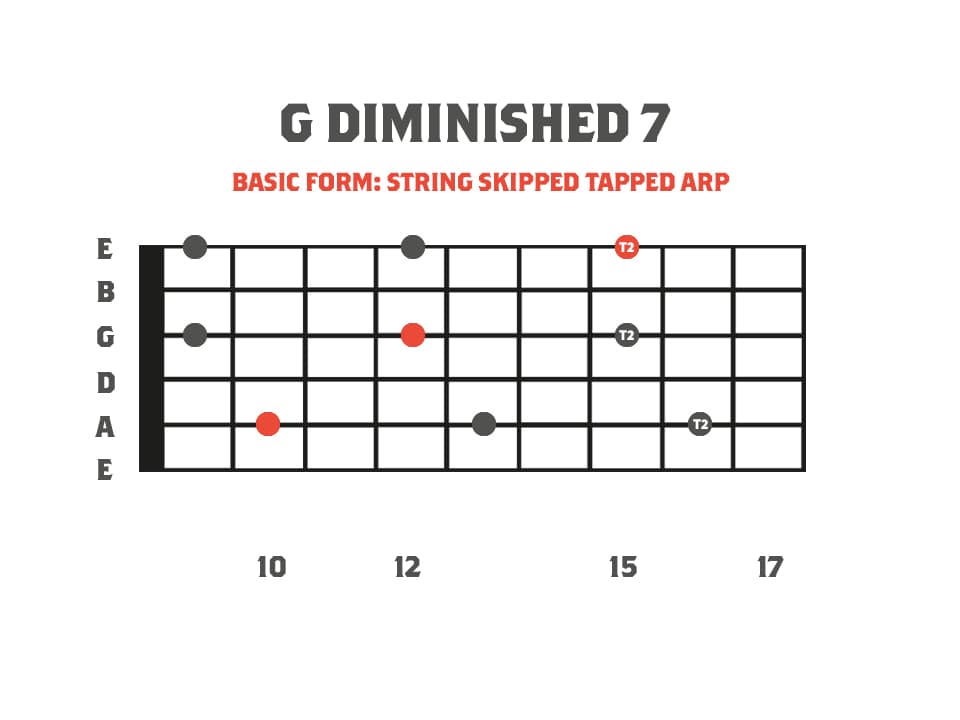
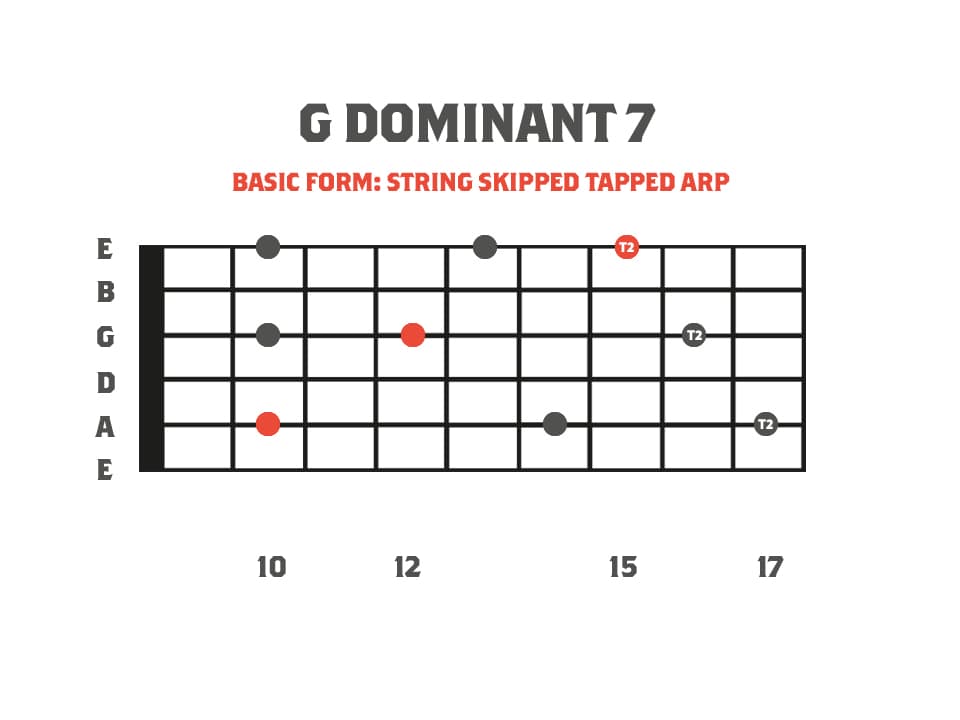
We will leave you to discover other tonal possibilities using string skipping tapped arpeggios!
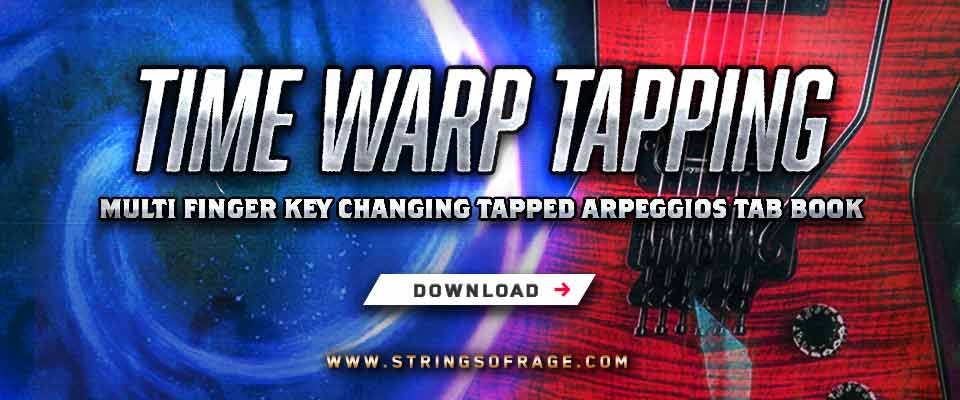


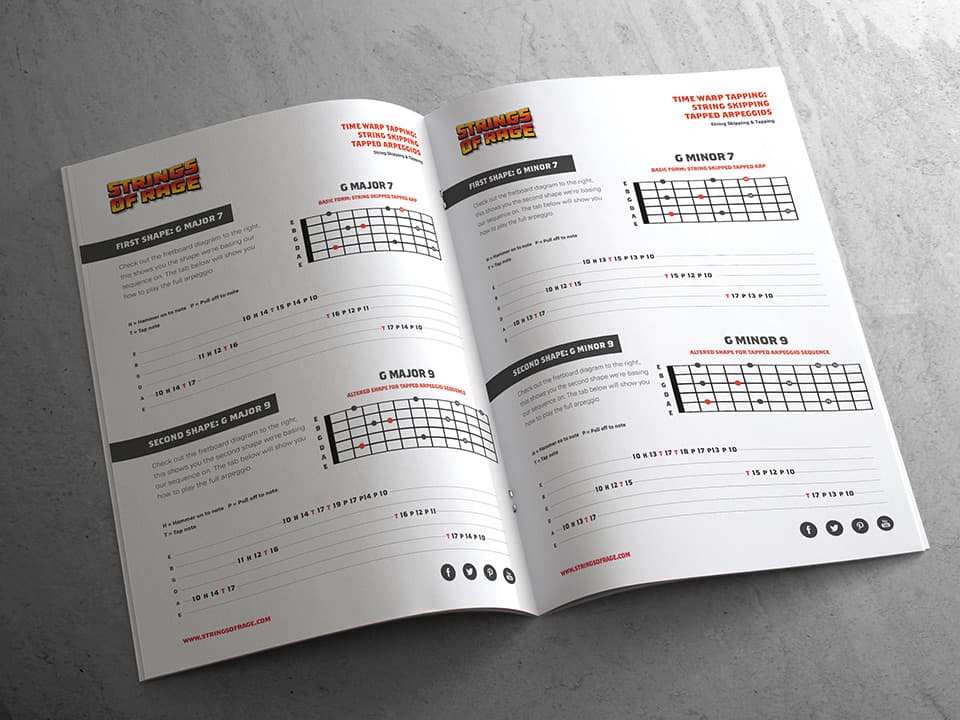
Footnote: The guitar used in the cover image of this post is a Dimebag Dean ML by Dean Guitars

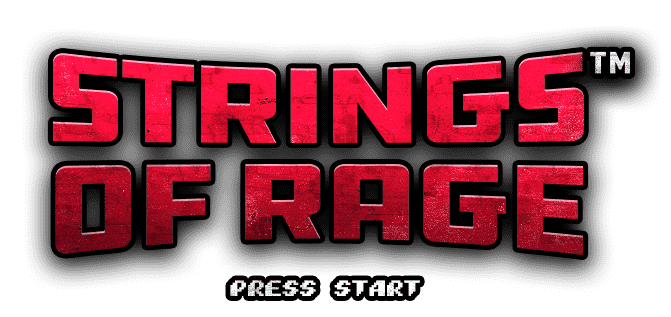
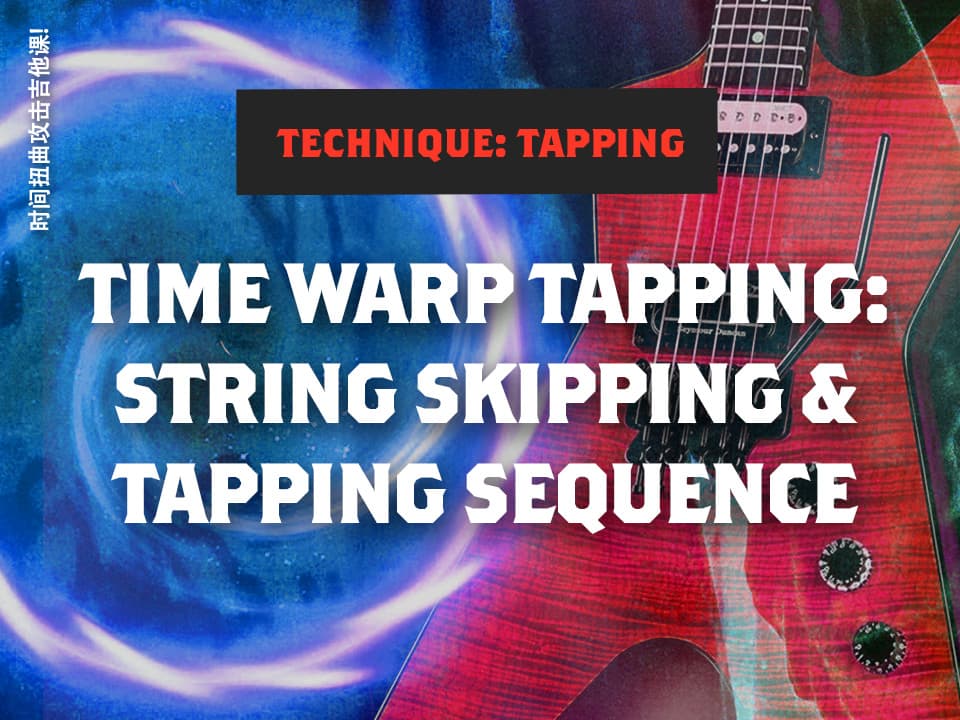
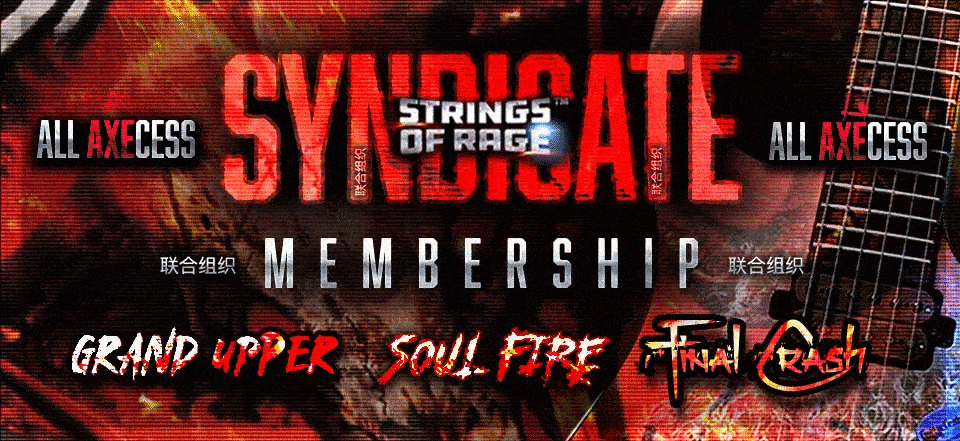






No Comment